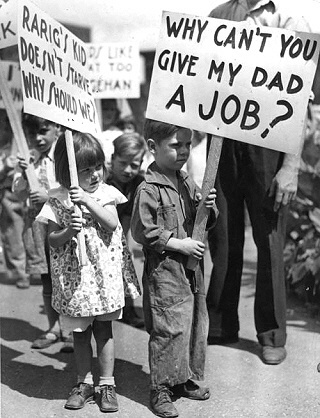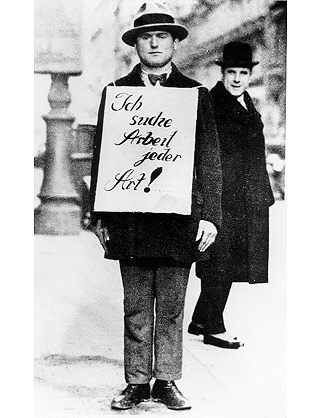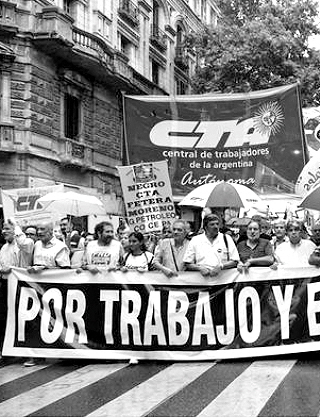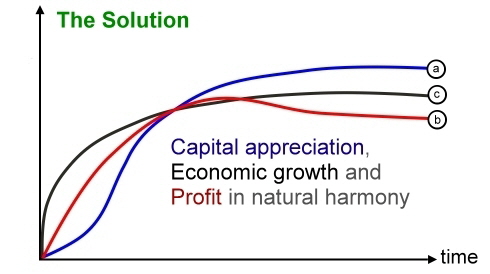


Home Energy Water Work Economy Solution Politics Team Product Recycling Cars Ships Aircrafts Promotion
World Pollution Air Weather Violence Women Weapons Psychology Plants Animals Food Peace Faith Imprint
Work
Since capital grows exponentially through interest and/or returns, more and more profits have to be realized faster and faster. In order to be able to achieve even more profits, costs must be reduced. One of the cost factors is human labor. If at first the workforce was simply used more rationally, for example in the assembly line production that Henry Ford used for the first time, today it is increasingly robots that take over the work of humans. This happens in almost all areas, not only in production but in the entire chain up to delivery. Where labor cannot be replaced, work is outsourced to countries where labor costs as little as possible. In the Roman Empire and the end in the USA slaves were brought into production or service facilities, but today the reverse is the case, today the work comes to the poor countries. Of course, this traditionally means a high number of unemployed in the Country of the Market.

![]()

![]()

On the one hand, there is a shortage of skilled workers in Germany, on the other hand, there are more than 3 million people without work in Germany this are 6,4%, in the USA we have 5.36%, in Mexico 4.14%, Chile 8.86%, Venezuela 35.54%, Brazil 14.2%, Italy 9.4% , Spain 13.38%, Portugal 6.5%, France 7.8%, Sweden 7.84%, Austria 6.1%, Kosovo 25.7%, Serbia 9.9%, Croatia 7.5%, Romania 5 .6%, Africa on average 10.24%, India 8.0%, Russia 4.8%... In Switzerland it is only 2.3%, but even there, despite this ominous “lack of skilled workers”, there is no full employment. Incidentally, in Cuba, which is really destitute, the unemployment rate is only 2.6% and is expected to fall to 1.6% by 2024. The so-called "shortage of skilled workers" usually arises from the capital-related inability of companies to train appropriate skilled workers.If the need and the prospects of profit are high, as after the Second World War, training of own specialists is not an issue at all.
Incidentally, around 1968 we had almost full employment in almost all major manufacturing countries, after which the unemployment rates rose again and then never fell below the global average of around 5%, currently an estimated 6.5%.
Why is that? Let's examine this graph to illuminate the matter. 
The point X where the workers and employees end up on the street
After 1945 the economy was at the level it had been in 1890 and in Europe many cities suffered major damage. So there was a huge demand, and the economy, boosted by new production facilities and processes, skyrocketed to the same extent as it had before the Second World War due to the war economy. In the USA, on the other hand, catastrophe was looming, and the economy there, which had been ramped up for the war, was in danger of collapsing again. But now the USA invented the so-called "American Way of Life": the transition from wartime to peacetime mass production. This was made possible not least by a new medium from Germany: television. Television made it possible to create artificial needs where people lived, in their homes, in their living rooms. So the global economy initially grew and grew. Cheap energy also contributed to this sustained boom. But around 1968 the saturation point was reached. This means that the first major reconstruction was complete, almost everyone owned the advertised new household appliances and was otherwise already settled in. The largest investments had also been made, and thus the curves of economic growth, capital appreciation, and profits intersected. From this point X (around 1968), the exponential growth of capital entered a new upward phase. While goods were still being sold in abundance, there was still considerable room for improvement, especially in motor vehicles, new video and audio equipment was coming onto the market, and traveling abroad in the summer became fashionable... but from this point X, it was no longer possible to reflect the increase in capital with economic growth alone. Now, profits had to be increased in other ways to realize the enormous increase in capital.
The first rationalization measures were implemented. Outsourcing of expensive company divisions to cheaper subsidiaries or outsourcing of entire production facilities abroad followed. It would probably have been more rational to limit capital growth from point X onward, but people didn't want to stop generating ever-increasing profits in order to allow capital to continue growing exponentially. Despite the great home computer revolution that began in the 1980s and the introduction of the internet in the 1990s, unemployment suddenly began to rise steadily, because job cuts were now also part of profit optimization.

So far, the leaders have managed to keep the situation somewhat under control. Even after the 2008/09 financial crisis, the banks were allowed to carry on as if nothing had happened, with the help of politicians and central banks, but credit burdens are increasing year after year, and disruptions like a pandemic and war aren't exactly making things any easier. National debt is currently rising many times over, as are prices. France is currently at its limit, and so-called austerity measures are once again supposed to ensure that national debt is reduced, although this will of course damage purchasing power and could cost more jobs. In the USA, only prices are rising faster than unemployment, and in
Germany, too, while unemployment continues to rise, reforms are supposed to fill the holes in the national budget at the expense of the social security system. The USA and Germany are openly trying to transfer money from the bottom up into the economy in order to generate strong economic growth again. Whether this will succeed, and especially whether it will create more jobs, is highly doubtful, given that a wave of artificial intelligence and robotics is currently aimed at eliminating more jobs in order to increase productivity and enable further profit increases. All of this will certainly not lead to full employment as we once had.
We can only achieve full employment if we switch to high-quality, durable products that are repaired or upgraded in workshops by humans and by hand, and then reused, and can be optimally recycled by humans at the end of their lifespan. A major project such as the construction of an international energy and water network could also create many jobs.
However, this will only work if we stop chasing an impossible-to-implement system of infinite and exponential capital growth and finally implement a genuine rationalization of our financial world and our way of doing business.
Full employment through real rationalization
On the "Solution" page you can read how this is supposed to work and why it never worked the way it is and will never work.
To the top ![]()
![]()
![]()
Home Energy Water Work Economy Solution Politics Team Product Recycling Cars Ships Aircrafts Promotion
World Pollution Air Weather Violence Women Weapons Psychology Plants Animals Food Peace Faith Imprint